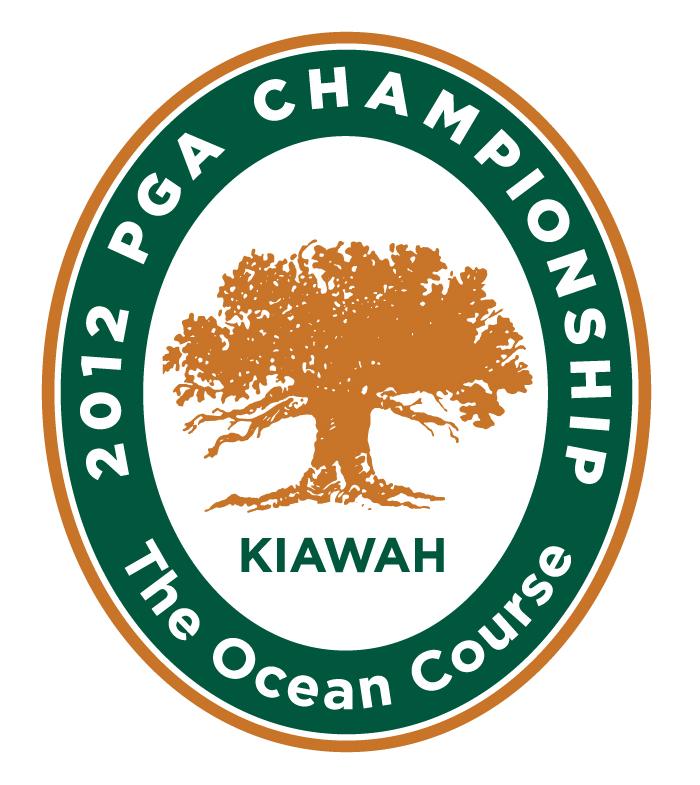 Many people aren’t aware of the fact that Kiawah Island’s Ocean Course hosted the 1991 Ryder Cup mere months after it opened. Check out Google Earth and go back to aerial photos from 1989 and you won’t even see the beginnings of a golf course. Yet less than two years later the site hosted the “War by the Shore” that really set the modern-day Ryder Cup as the most hotly contested, emotional, nationalistic event in golf.
Many people aren’t aware of the fact that Kiawah Island’s Ocean Course hosted the 1991 Ryder Cup mere months after it opened. Check out Google Earth and go back to aerial photos from 1989 and you won’t even see the beginnings of a golf course. Yet less than two years later the site hosted the “War by the Shore” that really set the modern-day Ryder Cup as the most hotly contested, emotional, nationalistic event in golf.
Since 1991, the Ocean Course has played host to several local PGA events, a senior PGA Championship or two, and this week, will host the strongest field in golf in “Glory’s Last Shot” – the 2012 PGA Championship will play over the 18 seaside holes off the south-eastern coast of South Carolina, 45 minutes from Charleston.
I was able to spend a few days with my family vacationing on this exclusive, semi-private island. We played some golf, we lounged in the pools, and we boogie-boarded in the ocean.
Arriving at Kiawah Island
Kiawah Island is located about 25 miles from Charleston, SC. It takes about 45 minutes to get to Kiawah Island from downtown Charleston, but that’s because, like the Florida Keys and other barrier islands on the east coast of the United States, access is limited to a few two-lane roads with 45 MPH speed limits.
Kiawah Island’s proximity to Charleston is a nice bonus, as you can easily spend the morning and early afternoon cruising around downtown Charleston. We checked out the City Market, which takes up two or three city blocks, and then ate lunch at the famous Hyman’s seafood, where I had the absolute best meal I’ve had in the past couple of years at least (here’s my tweet). FOr dessert? We dropped by a place called Cupcake for some ice cream. Just kidding! We got some cupcakes. I recommend the peanut-butter-chocolate.
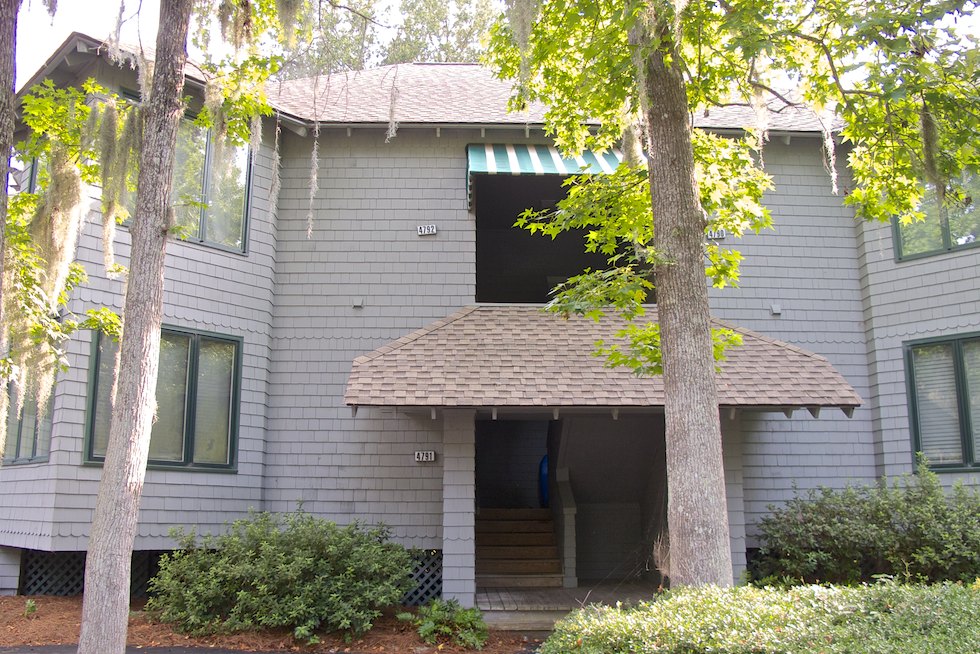
The drive onto the island was pleasant, as a canopy of trees often enveloped the small road, providing the feeling that you were driving up Magnolia Lane at Augusta National for miles at a time.
After going through a gated check-in point (there’s only one road onto Kiawah Island itself, and almost nobody lives on the island), we checked in at the main island clubhouse. The clerk was kind enough to point out the several swimming pools, beach access points, tennis courts, golf courses, and other attractions on the island.
We were staying in a Villa near the tennis courts in the “Sanctuary Preserve” section of the island (about 1/4 of a mile from the Turtle Point golf course). The villas are multi-unit family (four to eight by our count). Our building housed four units, and we were on the top unit.
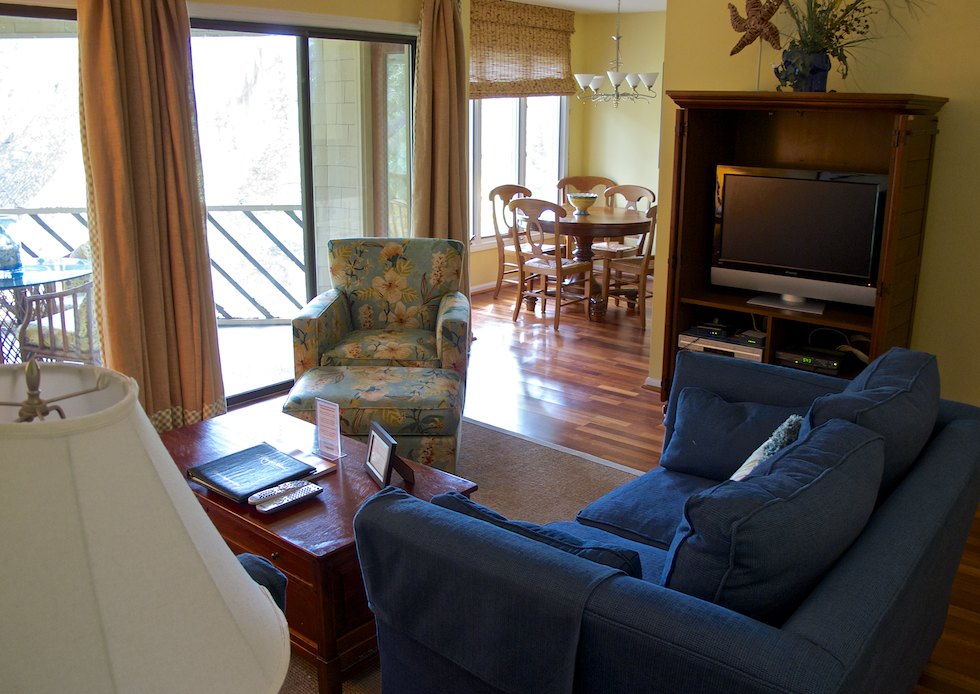
The stairs were wide and the villa was nicely decorated and stocked. Our back deck looked out on a brackish waterway that was home to a family of alligators and an osprey nest in the tallest tree.
The villa had two bedrooms and two full bathrooms and was “move-in ready” in terms of having everything you’d need: dishes and silverware, laundry detergent, extra sheets and pillows, soap, etc. The TV worked and we had Internet access, too. The shower had good pressure and was hot. Then again, you wouldn’t expect anything less – the whole island isn’t really all that old!
If you’re vacationing in Kiawah Island, upgrading to a villa over the more “hotel-like” options is definitely recommended, though admittedly, you might not spend a lot of time in your room.
The Ocean Course
I’ve been fortunate to play some of the finest golf courses in the United States, many of which have hosted or will host major championships (or both!), including Oakmont, Bethpage Black, Oakland Hills, Muirfield Village, Oak Hill, Pinehurst, Pine Needles, and more.
The Ocean Course at Kiawah Island may not crack the top three, but it’s safely inside the top ten and would battle mightily for a spot in the top five.

The Ocean Course from above. You might want to check this photo out in full resolution.
Driving out to the golf course from our villa, we passed another security checkpoint. The farther you drive (it’s only a few miles), the larger the houses get and the fewer of them you see. As you drive onto the golf course property, you leave the houses behind and drive out onto what feels like the back edge of the beach. You’re surrounded by large sand dunes and palmetto bushes as you feel and smell the ocean breeze. As you pull into the clubhouse driveway, you look beyond it to see the ocean – it’s right there!!!.
Walking into the clubhouse, you’ll find the well-stocked (for apparel, that is!) pro shop to the left and an intimate grill room called the Ryder Cup Lounge to the right. Large floor-to-ceiling windows look out upon the practice green and, from the grill room, the 18th green as well.
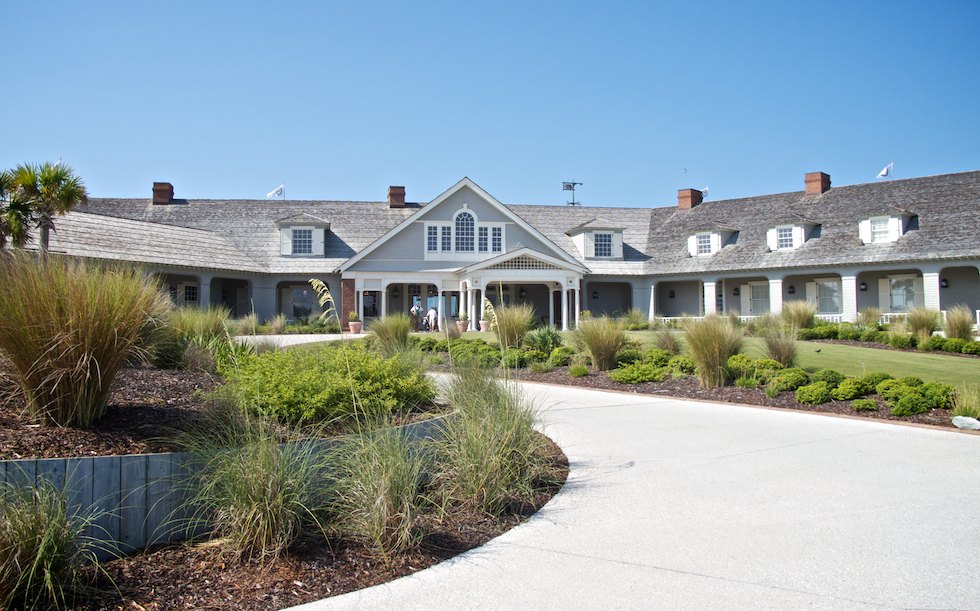
The range sits just outside the pro shop, where your caddie will likely be waiting. I believe you can play the course without a caddie, but I don’t recommend it. At $65 recommended tip per bag, a caddie should add mightily to the experience (more on our caddie later). The range points towards the east, and the prevailing wind is out of the southeast, so into and from the right – a good wind in which to warm up. The range – like most of the Ocean Course – is but a few hundred feet (not yards) from the ocean itself depending on the tide.
I played the back tees at about 7300 yards. There were a few tees that were behind us (without the tee markers) that were obviously going to be used during the PGA Championship. I suppose the course can be stretched to 7800 yards or so. They might even list it as 7800 yards, but they won’t play the tees all the way back every day.
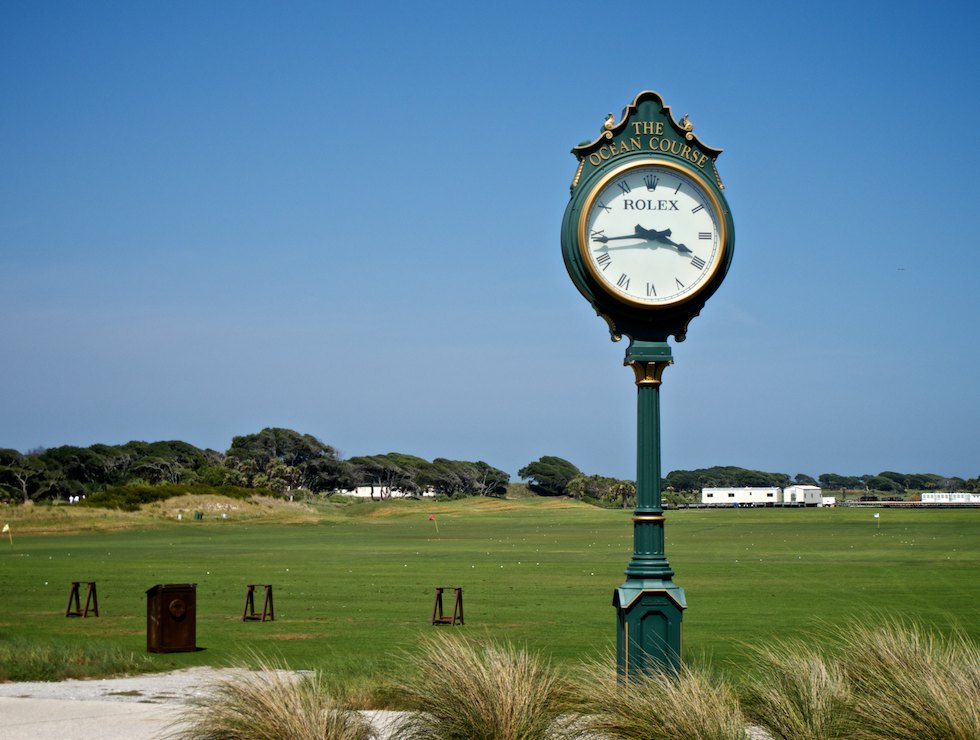
The golf course begins with a fairly gentle par four. It’s gentle because there are 20 or so yards of light rough to the left side of the fairway, while the right side falls down five feet or so to a waste bunker area filled with trees, scrub grass, bushes, and undoubtedly a good bit of wildlife. We didn’t see any alligators during our 18 at the Ocean Course, but they’re out there.
At any rate, a three-wood and a sand wedge were all that was required on this 395-yard par four. Despite practicing a bit on the large putting green, it took me awhile to adjust to how slow the greens play despite looking fast. The paspalum grass is somewhat unique to the Ocean Course – in fact, every other course on the island has Bermuda greens. The Ocean Course’s greens are relatively flat, and slower than you might expect, and will cause problems for the pros when they play the final major of 2012 here later this week. Suffice to say my 30-footer came up well short, but I gutted the next one in for an opening par.
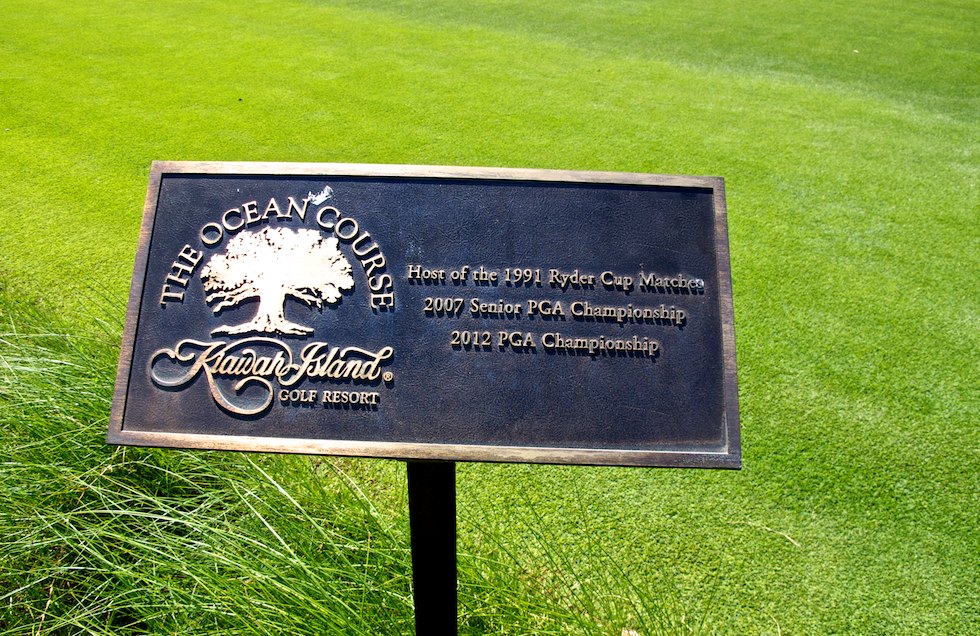
Though I suppose you could almost try to drive the first green depending on the wind, the second hole presents the first of many of Pete Dye’s characteristic “target” challenges. It’s a 543-yard par five, but if you want to hit driver you’re hitting over some trees and sandy areas to a fairway that’s slanting away from you at about a 45° angle to the left. The safer play is to hit a 3W or even a hybrid out to the right, lay up, and wedge it close. It’s a blend of target golf and hero golf that Dye’s pioneered.
Dave took an aggressive line, which our caddie said “had no chance” of being safe, because it was left of the line even Robert Garrigus took a week or so prior. He played a second ball from the tee to the safe area, only to play his first ball because, it turns out, Dave might be a little bit longer than Robert Garrigus. 🙂
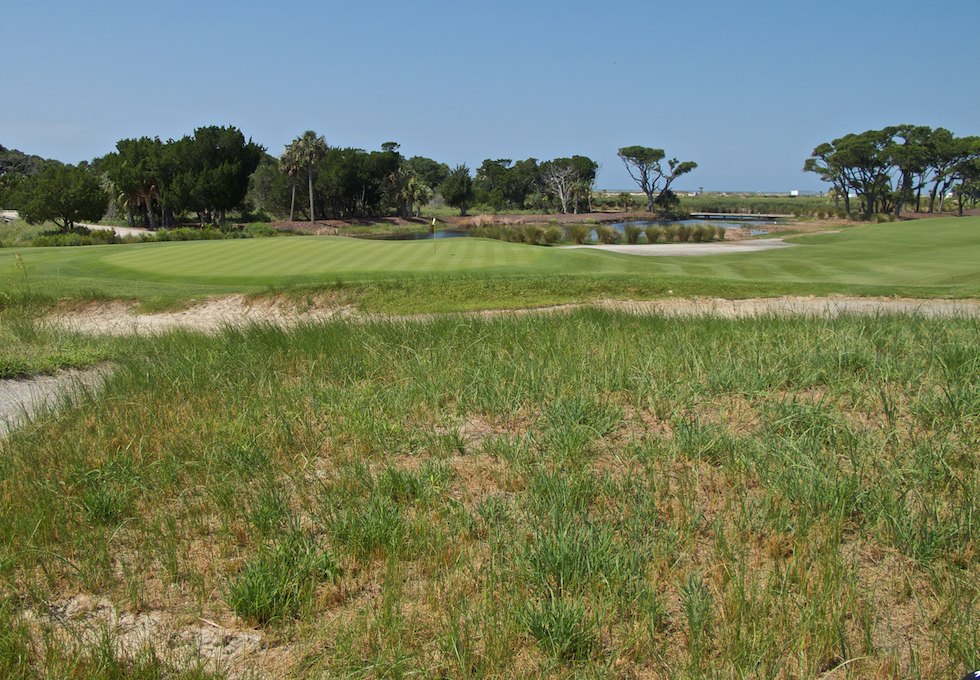
Looking back at the first green from the walk towards the second tee.
I found the greenside “bunker” in three after finding the sandy area when the wind turned my slight draw into a slinging draw that couldn’t carry to the fairway and punching up the fairway. My second and hybrid third shot were both struck from the sandy areas, and like the greenside “bunker” from which I played my fourth, was played as “through the green.”
To be clear, despite being littered with sand, there are no bunkers on the Ocean Course. Every sandy area is considered “through the green” – you play your ball as it lies, but you can take practice swings, your caddie can stand in there with you and your bag, etc. A few rakes are littered about as the greenside “sandy areas” are a bit softer than the rest (which is firm packed sand that barely leaves tire tracks when a cart runs over them), but usually you can return even the greenside sandy areas to condition by swishing your feet a few times.
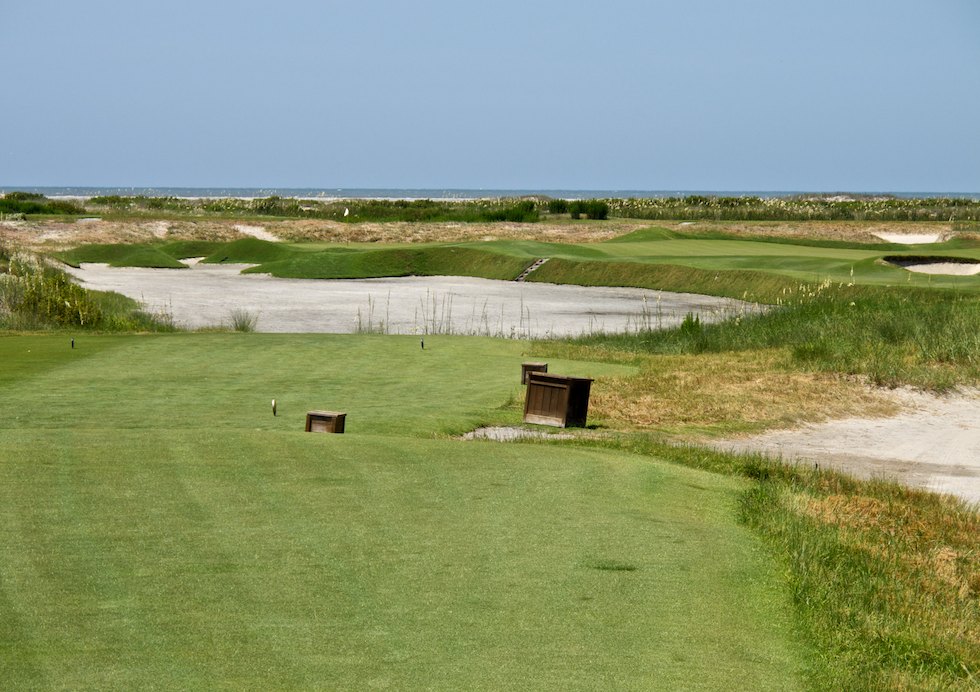
The fifth hole at Kiawah Island’s Ocean Course.
The third hole offers up some birdies if you can get close. The fourth hole has you hitting over a marshy area with a long iron or hybrid to set up a 175-yard shot to a green angled about 70° to the line of play. The fifth, a 207-yard par three that plays directly into the wind (I hit 3W pin high, and I hit it well in a “moderate” breeze). In the image above, you can see the pin tucked back left on a sliver of green. The putting green extends all the way to the right and is about 40 yards deep. If you find the front of the green, someone sunning themselves on the beach just over the dunes could be closer to the hole than you.
While the fifth turns back towards the ocean, the sixth is the first hole that plays the opposite direction of the first four holes – westward. It’s also the first hole that plays alongside the beach. You’ll travel westward until the 14th hole, which is also the first time on the back nine that you return to the beach-side holes.
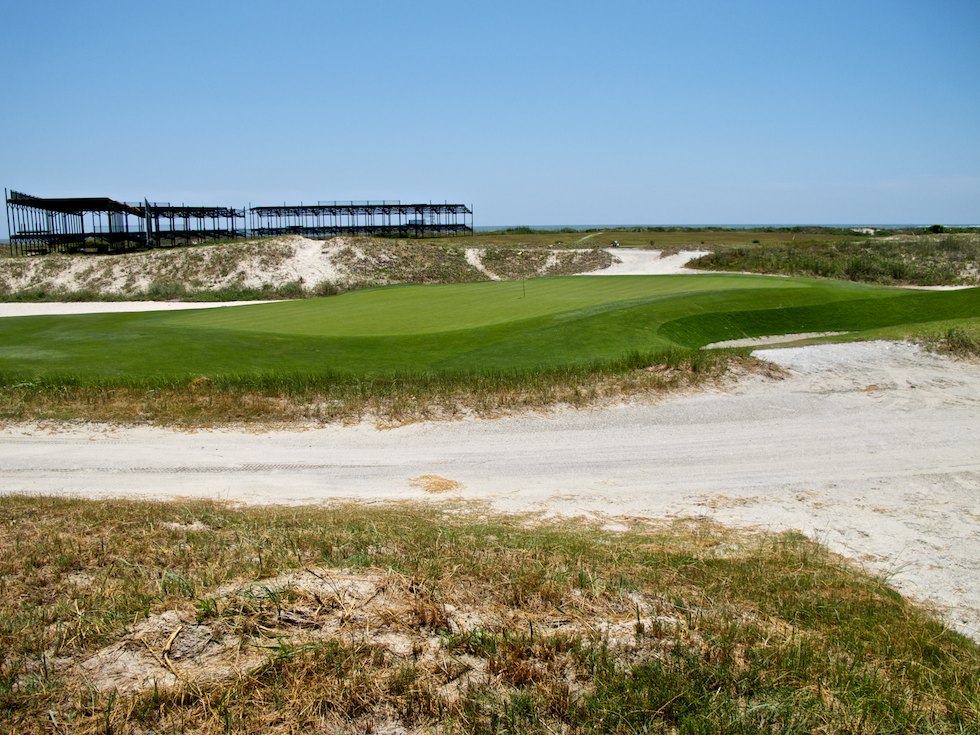
The tenth. The grandstands near the 17th are in the background.
The sixth is a stout par four of 455 yards, and the seventh is a 527-yard par five. Reachable in two? You’d like to think so, wouldn’t you? But the pro going for this one in two will first have to find a fairway that twists and turns in the landing area, then will have to deal with the green, flanked left and long by a steep wall and a waste bunker and to the right by shaved grass and trees.
A plain but devilish par three (197 yards) and par four (464) close out the front nine before you likely hop in a cart for the long ride to the 10th tee. If you haven’t scored well by now, well, then good luck to you because the back nine is no bargain at all. Though there are no really “easy” holes on the Ocean Course, the majority of the difficult holes exist on the back nine.
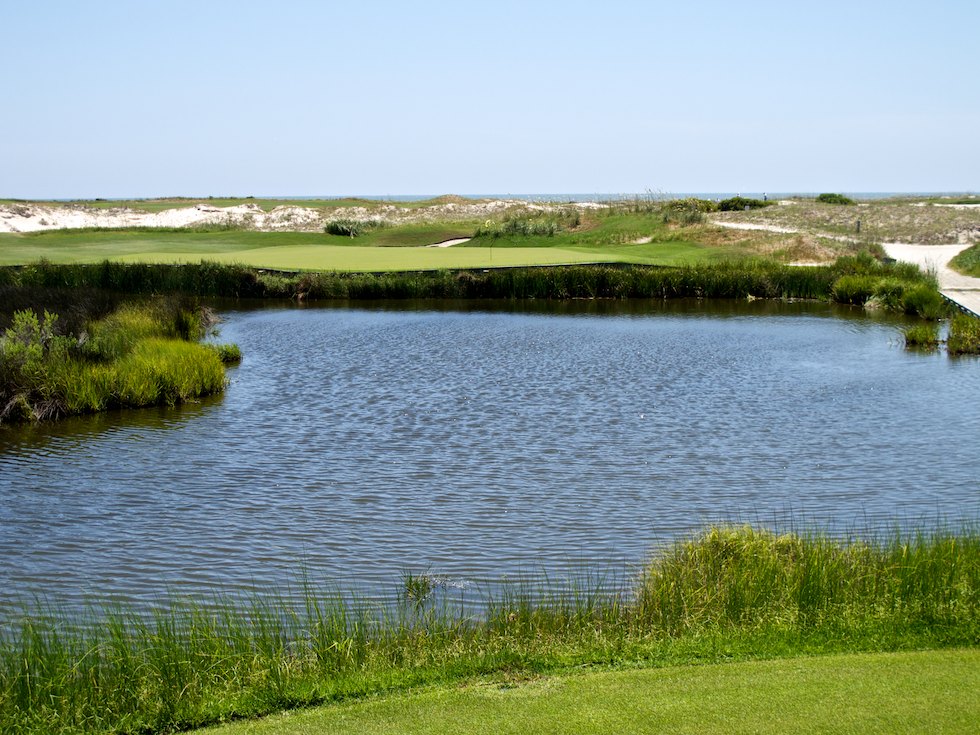
The 12th Green is abutted by water, as seen from the 13th tee.
At the halfway house, we surprised our caddie by getting our order together quickly and heading off to the back nine. We interrupted his “cigarette” (that’s in quotes for a reason) and set off. A brief word about our caddie: he complained the entire time (about almost everything), didn’t read putts, kept the clubs only reasonably clean, and couldn’t club us or read the wind to save his life. But I should cut him some slack – he’d only been working there for three years. 😛 I can’t think of anything he did well, except that he did keep up with us. And I suppose he was complimentary when he said “I’ve never caddied for regular guys as long as you both” and “Your shots don’t seem to be as affected by the wind like I’m used to.”
Still, I can only assume that we got an unusually bad caddie, and I will recommend that you hire one all the same. It was well north of 90° the day we played, so unless you want to play with a cart after 2pm, we were happy to have someone else carry the bags.
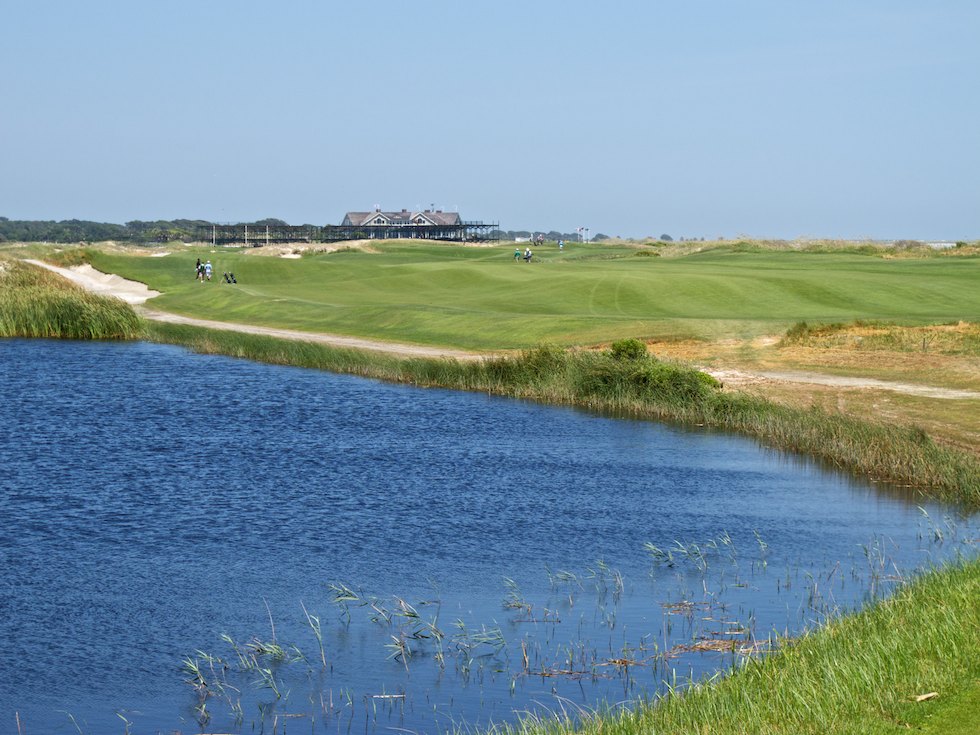
The tee shot at the 16th hole, a long par five with the ocean to the right.
The back nine, well, it’ll kick your ass if you’re not prepared, especially with the left-to-right prevailing wind off the ocean for the first several holes. Slicers in general will not enjoy holes six through thirteen, I can say that much.
The tenth is a mid-length par four at 439 yards, followed by a twisting 562-yard par five with the an elevated green offset to the left. In fact, almost all of the greens at the Ocean Course are elevated, with either shaved run-off areas or steep grassed banks leading to sandy waste areas. Despite having more seaside holes (10) than any other course in the western hemisphere, the course plays nothing like a links course. The bermuda and paspalum grass is not conducive to run-up shots at all, and were they, the elevated greens set at angles to the line of play would deflect the ball away from the greens let alone the hole locations upon them.
If you’re looking for a “links-type” experience, unfortunately the Ocean Course is not the place to go. You’ll want to visit Cabot Links in Canada or the Bandon courses out west for a links experience.
The 12th and 13th complete the outward portion of the back nine, and clock in at 466 and 404 yards respectively. Both feature greens hard by the side of the water, and with the wind blowing that way most of the time, will require a carefully placed approach shot.
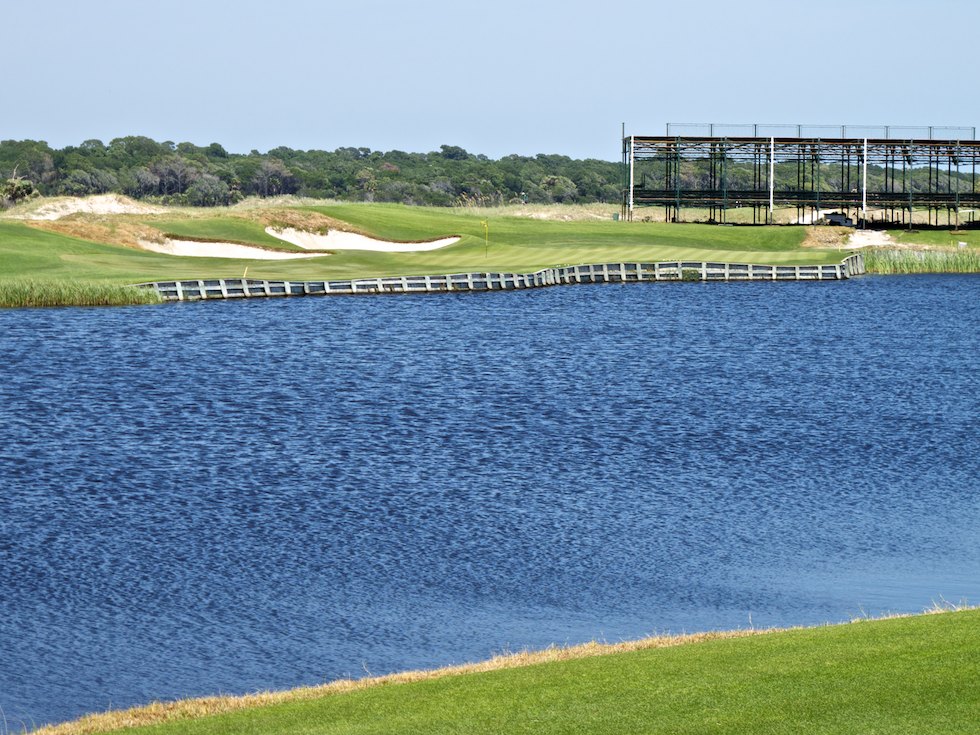
The famed 17th at Kiawah Island’s Ocean Course: Mark Calcavecchia’s favorite hole!
The 14th turns back towards the clubhouse. At 194 yards, and with another elevated green, the hole is still the second easiest par three on the course. The 15th measures 421 yards and provided for easy birdie putts for Dave and I. I chose 3W and drove to about 121. From there, and with a wind freshening from right to left, I chose to bump a little 9I into the front-left hole location. It’s one of the shots that makes me love golf, playing a cute little shot that accounts for the yardage, the wind, the course conditions, the green and the hole location. These shots abound at the Ocean Course, and there’d be more of them if every green weren’t sitting ten feet above the surrounding area.
Sixteen is a 579-yard par five that was host to one of my favorite shots in the past few years: from about 290 yards out and with the wind whipping to the left, I chose a 3W and aimed it so far right that I was essentially staring at the ocean. I striped it and the wind brought it back to a spot just in front of the green, but the ball hung over the beach for what seemed like an eternity.
The yellow line indicates the starting line for my 3W second shot to the par-five 17th.
Of course, the famous 17th hole follows. Now, the predominant wind is from right to left, but apparently the wind was into and from the left on that final day of the Ryder Cup in 1991. Several balls found the water in 1991, but today we hit four balls and none found the drink. We played two from the Ryder Cup tees (7I for me, 8I for Dave) and then two from the official tees for the day – a 9I and a PW.
The “Ryder Cup Tees” are about 25 yards short of a new tee added for the 2012 PGA Championship. The safe play in the prevailing wind seems to be to aim for the meat of the green, two-putt, and get out of there. But players who draw the ball will have to start the ball over the water, and players who fade the ball had better hope the wind comes off the ocean the whole week, unlike it did in 1991.
The 18th measures 439 yards but plays much longer than that because your tee shot should be placed well to the left. I shoved mine and found a spot that was a foot from doom to the right, but which left me a great angle of approach into the green. Dave went left and had to play a second shot to a green angled away from him to the left.
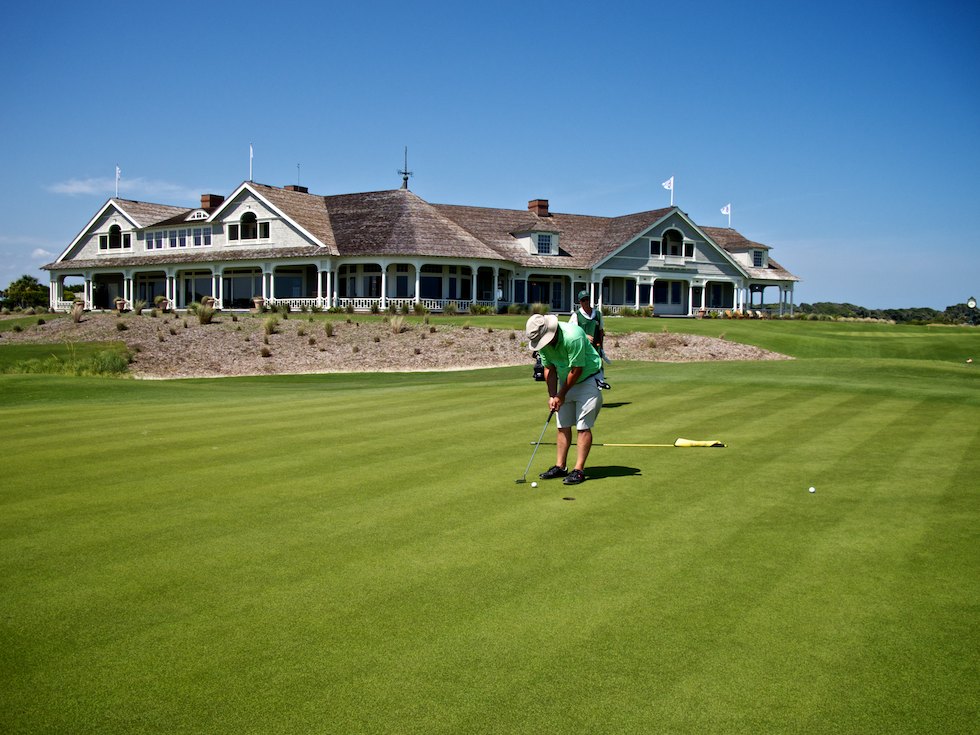
Dave putts out on the 18th hole for 73. I made the putt you see there for par, finishing with a score a few higher than 73. 🙂
The scene could not be more grand. The ocean laps at the shore yards from where you putt out and the Ryder Cup Lounge and outdoor deck seating are 50 yards to the north.
Dinner in the Ryder Cup Lounge capped off a splendid day at the Ocean Course. Had we been up for it, I should point out that the replay rate is quite reasonable. 🙂
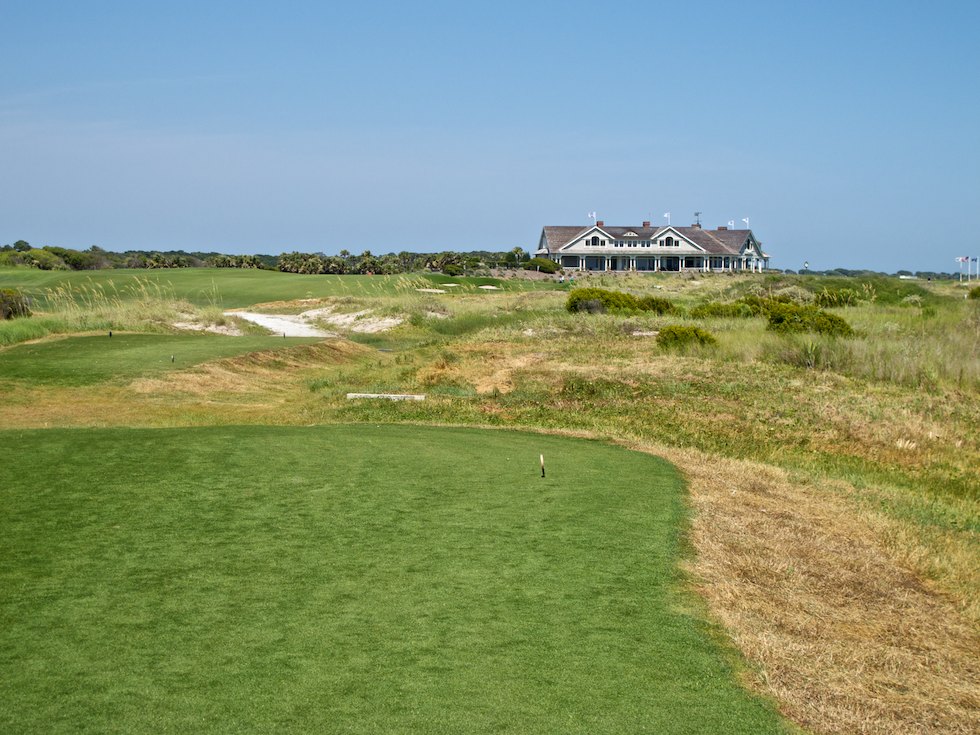
The tee shot on the 18th at the Ocean Course. Stay left! Nothing good is to the right!
Over dinner, we talked about how the PGA Championship would play at the Ocean Course. We agreed that the unique paspalum grass might befuddle the guys. The greens are flat, which means that reading the greens will be difficult. Given the flatness and also the slower speeds necessary (on account of the wind), we expect that, as at Royal Lytham, there will be lots of mid-length putts holed as well as lots of shorter putts missed due to slight misreads. The course is a target golf course, so driving is key. Despite measuring 7300 yards the day we played, we never had long clubs in, even with 3W off the tee several times, and so we don’t expect the PGA Tour pros will face too many long approaches, either. But those approaches will come in to small targets.
Essentially, it comes down to the wind. If the wind lays down for the week, then the pros may very well eat the course up. But if the wind blows, particularly if the PGA setup committee doesn’t account for this with easier hole locations and shorter tees, and we may have a winning score well over par.
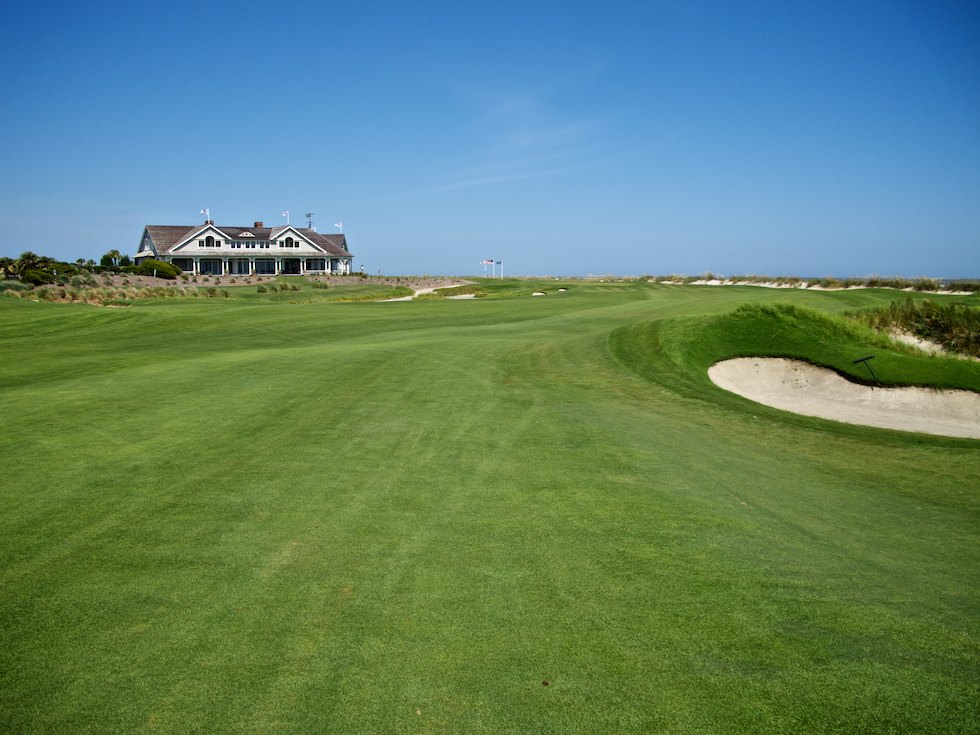
The approach shot to the 18th at the Ocean Course.
Again, the Ocean Course isn’t cracking the top three for me, but the scenery and challenge make it a lock for the top ten. Love him or hate him, Pete Dye usually makes his courses reasonably playable for players of all skill levels, and so long as you don’t go for the hero shot and play the right tees, you can get around this course, enjoy the scenery, and play some pretty spectacular holes.
Other Golf Courses and Family Activities
The next morning, Dave and I played Turtle Point, another of the golf courses on Kiawah Island. Turtle Point is a fairly “typical Florida course,” if you know what I mean: flat, Bermuda grass, water, railroad ties, etc. The course was not incredibly memorable, but it was really fun. Though our caddie described it as “tight” we felt nothing of the sort – there may be OB or hazards on both sides of most fairways, but the corridors are wide enough for us northerners that we felt there was plenty of room to miss sideways and still get around the course respectably.
One nice feature on the other four courses on Kiawah Island: the existence of “Family” tees from 90 to about 250 yards out in the fairways. If your wife is a beginner, or you have younger children, the Family Tees are a great addition that lets you enjoy spending time on the golf course with your family.
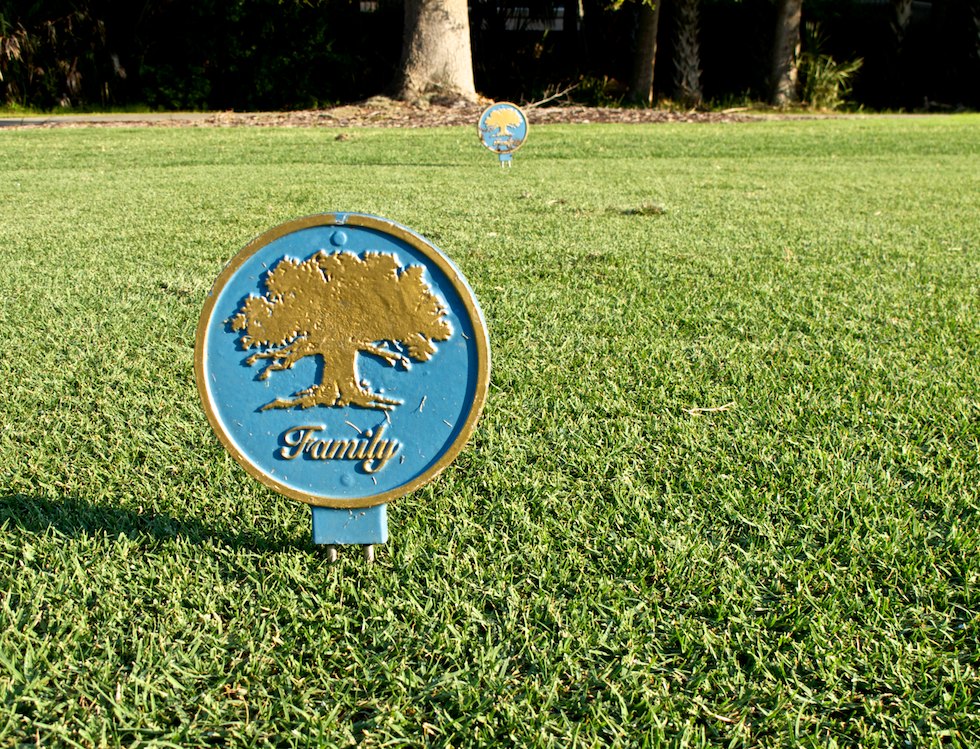
A few of Turtle Point’s later holes – the short par-three fourteenth, the par four fifteenth, and the par-three sixteenth – run smack alongside the ocean, separated by a thin, rickety fence. You can hold conversations with sunbathers if you find yourself waiting on the tee, and if you yank one a little bit, you might very well bonk one on the head with your golf ball the beach is so close. But the majority of the course is inland.
Outside of golf, the island features a fair amount for the family to do. Of course, there are miles of beach to enjoy, and due to the exclusivity, no beach is ever really over-crowded. One beach was a three-minute walk from our villa, and others were not far at all.
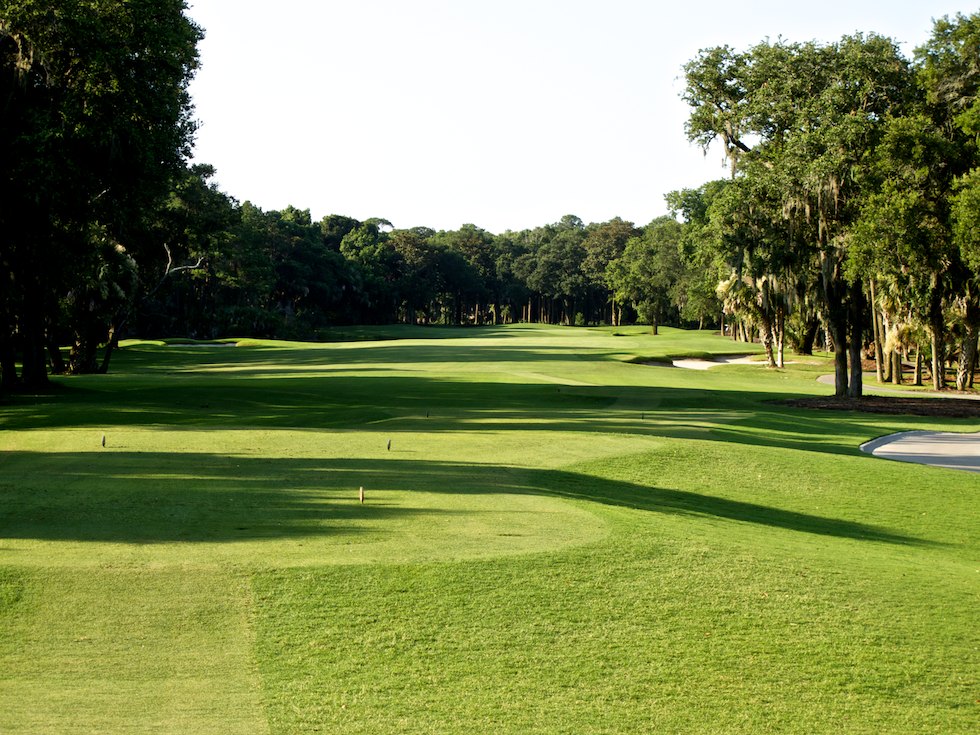
If you grow tired of washing sand out of your nooks and crannies, you can head to one of Kiawah Island Resort’s many indoor water parks and pools. One, which is disappointingly only open until 5pm, has two nice 40-foot tall slides and numerous waterfalls, water spray guns, and the like with plenty of poolside seating. This pool is right next to a more standard pool that has a basketball hoop on one side. Towels are free with a room key, and waiters will bring you a cool drink.
The Resort features a number of restaurants, including one that serves a pretty good Chicken and Waffles. A mile outside the gates of the Resort you’ll find a little village with an 50s-style soda shop, a nice Italian restaurant, a grill, and more. You’ll also find a grocery store there too, so if you didn’t stop at the Piggly Wiggle ten miles farther away, you can stock up on groceries.
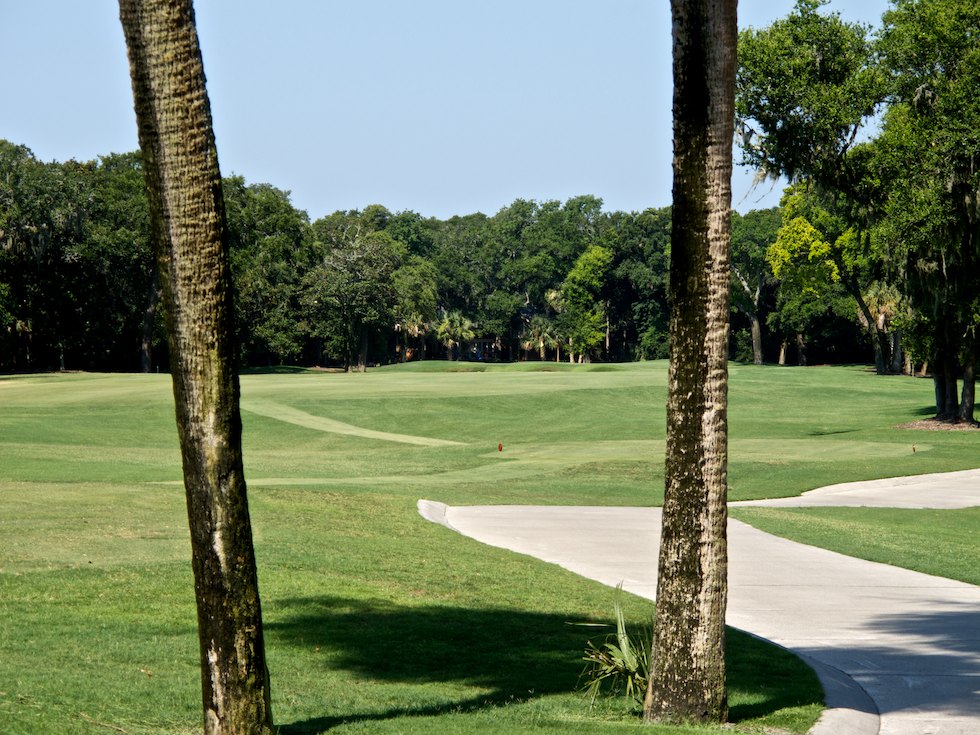
The Resort offers things like Kids Kamp, with activities Monday through Friday. Additional activities are possible too: glass fusion and other art classes are offered at the little cluster of shops near one of the main beach access points, for example, and there are bikes to rent and miles of trails suitable for inline skating, jogging, biking, or walking.
One of my favorite activities was to play disc golf on the little nine-hole course there. The discs were free to borrow (you get driver, mid-range, and putter discs). The whole family had a blast chucking discs around, under, and over the trees. Enough fun that I bought some discs and a goal shortly after I got home, in fact!
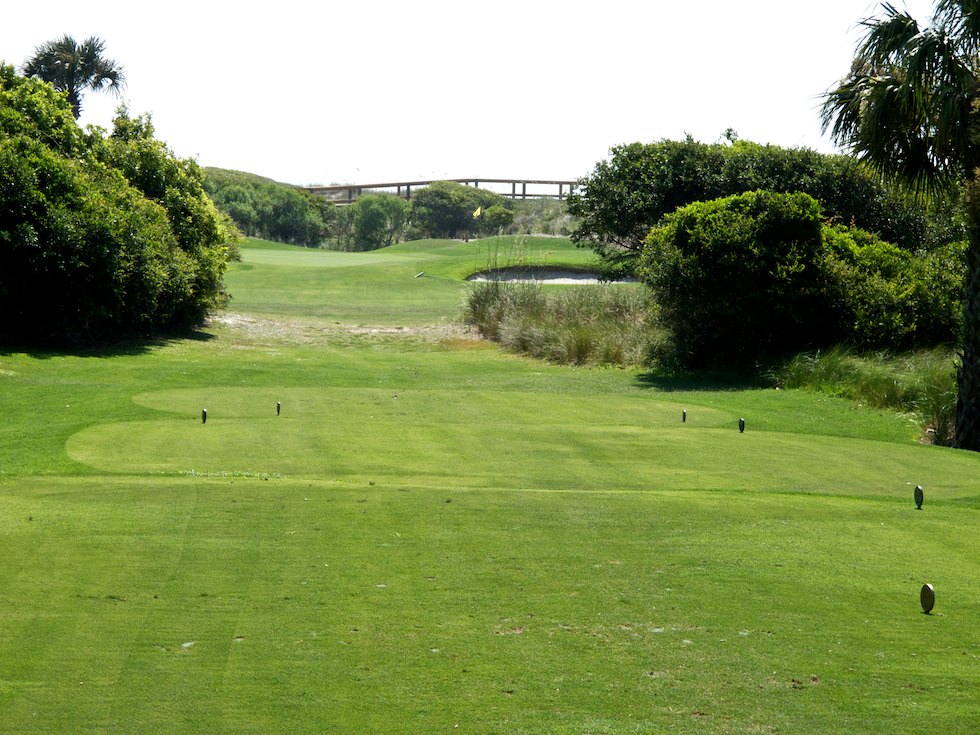
A Great Vacation
The first day we arrived, and visited the pool, I looked around at the number of people – many who had hats or clothes that indicated they were from Pennsylvania, Ohio, Michigan, etc. – and thought to myself “how in the world did these people think to come to Kiawah Island.” Where I live, people seem to know about places like The Outer Banks, Myrtle Beach, and the other more typical resorts. I half expected Kiawah Island to be half empty. Certainly the thought had never occurred to me to vacation there!
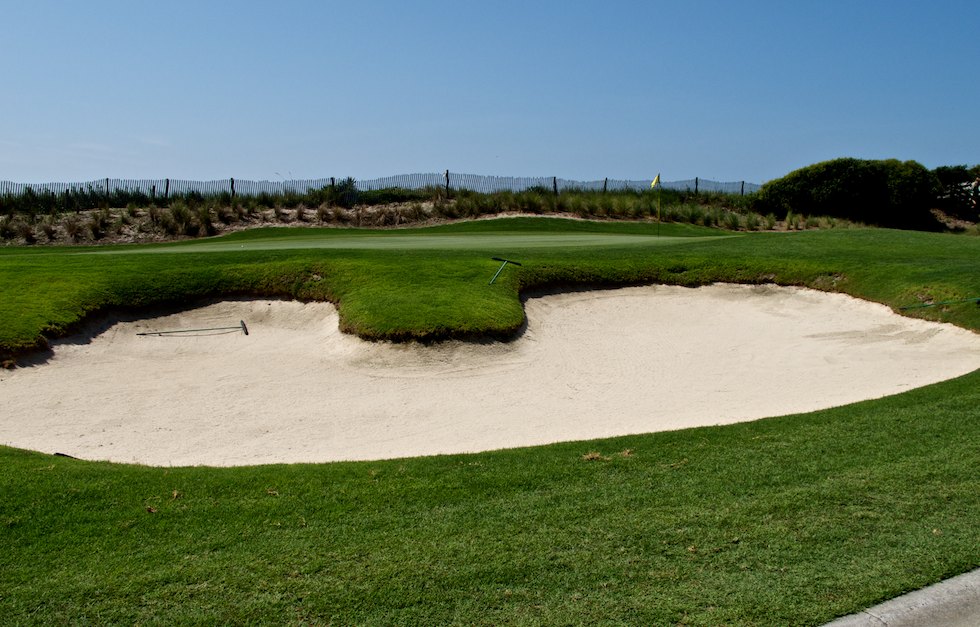
Yet as the week went on I found myself pleasantly surprised at every turn. No, Kiawah Island is not the place for adventure seekers who need a thrill a minute. It’s a secluded, private-feeling island with a laid back atmosphere and a lot of sandy beaches. If you’re capable of reading a book for hours by the beach or pool, and want to play a little golf (with the option to play one of the best courses in the world), Kiawah Island may be one one of the better kept secrets out there.
Check out the rates and look to schedule your own vacation at kiawahresort.com.
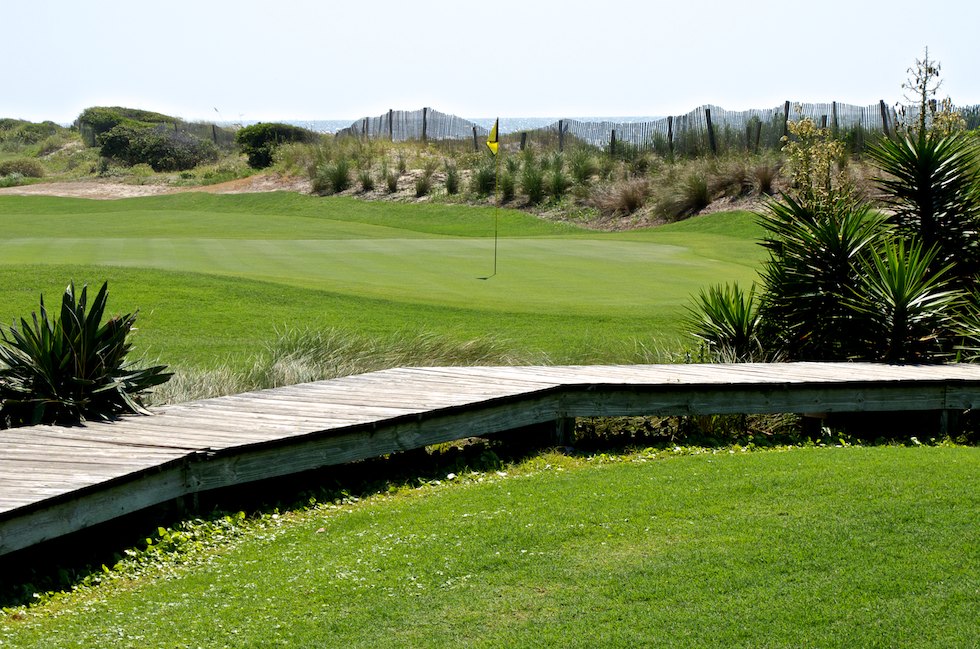
Thanks for the review – yet another course i want to play. Another links style course out West is Chambers Bay. I played there last week and it is in my top two on the West Coast – the other being Pebble Beach. I have not yet played Bandon.
First time I have had a caddie, and he made the experience of playing Chambers Bay that much better. He carried my clubs, cleaned them, carried on a conversation, told me where to lay up and go for it, and gave me an accurate line on the greens. The greens were sloooow, so I left most everything short, but that was not Bo’s fault. And importantly he found a few wayward shots of mine.
So if you can afford it, get a caddie.
This is really great. It is very good to see you got to put this review out so close to the PGA. I enjoyed reading it.
I’m from Indiana and our family has vacationed on Kiawah several times. It is a great place for a more private, relaxing vacation. Lots of bike trails and walking paths. Excellent golf and plenty of tennis and other activities. There are only a few restaurant choices but they are mostly good. I definitely recommend Kiawah for a relaxing vacation. Last year we went in early August and if you do, beware of the giant banana spiders!! 4 inches. lol
But don’t let them scare you off. Kiawah is a great place to go. But I would prefer if you go to Hilton Head and leave Kiawah to us. 🙂
I came to read about the infamous caddie story but ended up enjoying the entire review. What a read!! Thanks for taking time to post it. Sounds like a great trip. Might go myself – and the lady will be sure to gobble up some chicken and waffles!
Charleston SC is also a great place for a stay and play. I loved Wild Dunes resort and it has two top golf courses right on property and many golf courses near by. I especially like Charleston Nation Golf definitely would love to play again. The area is full of charm with the best restaurants and golf courses.